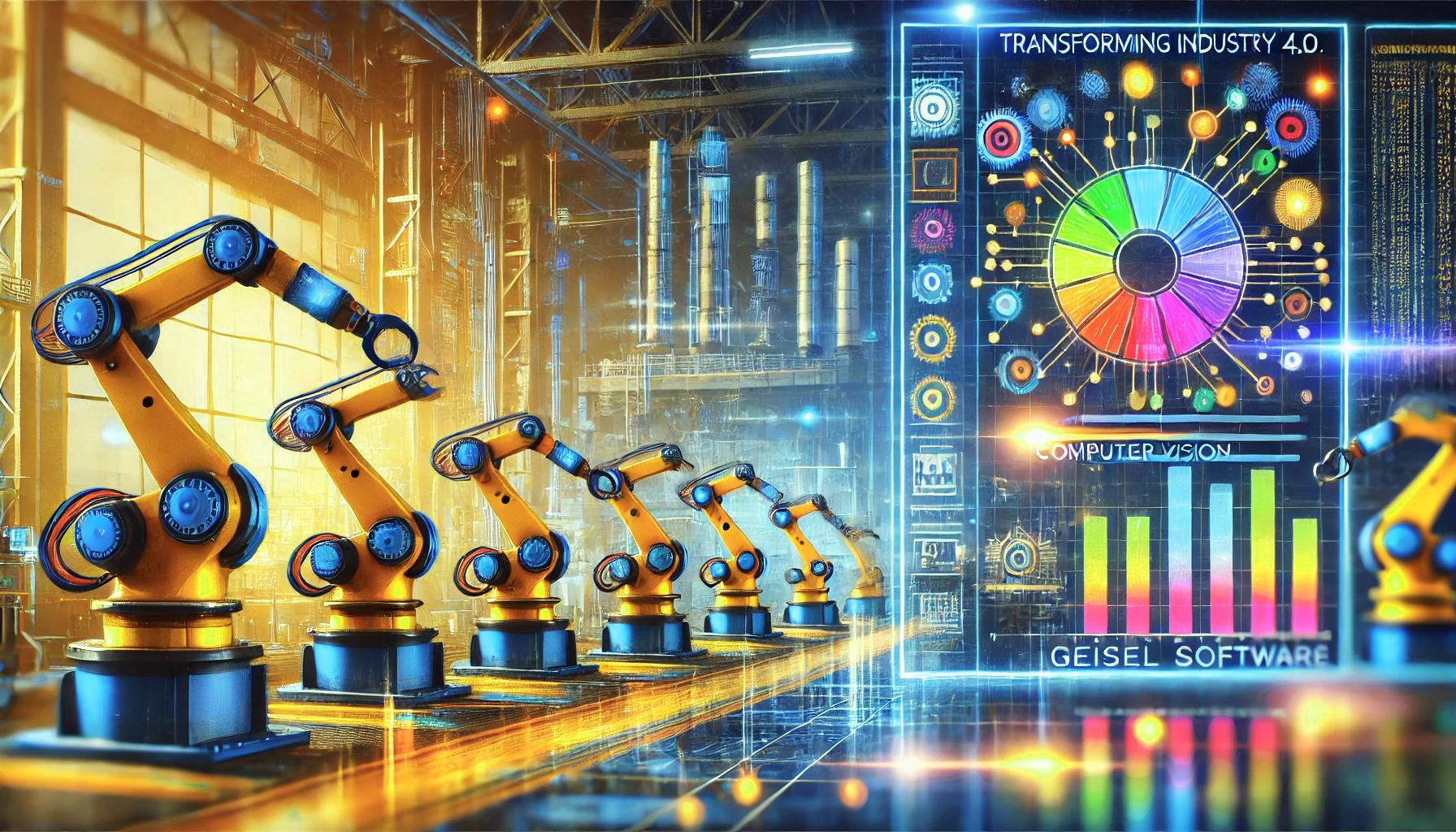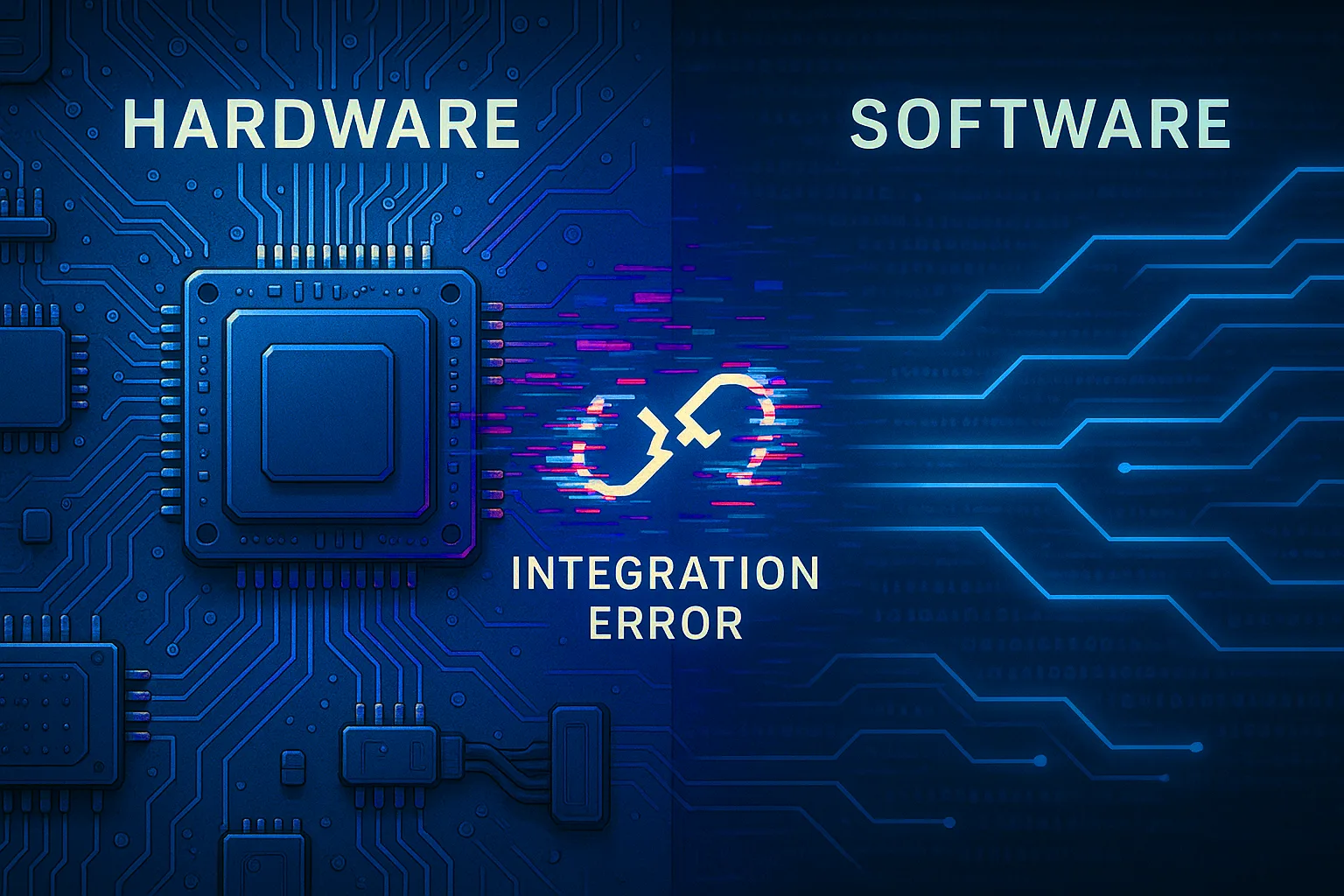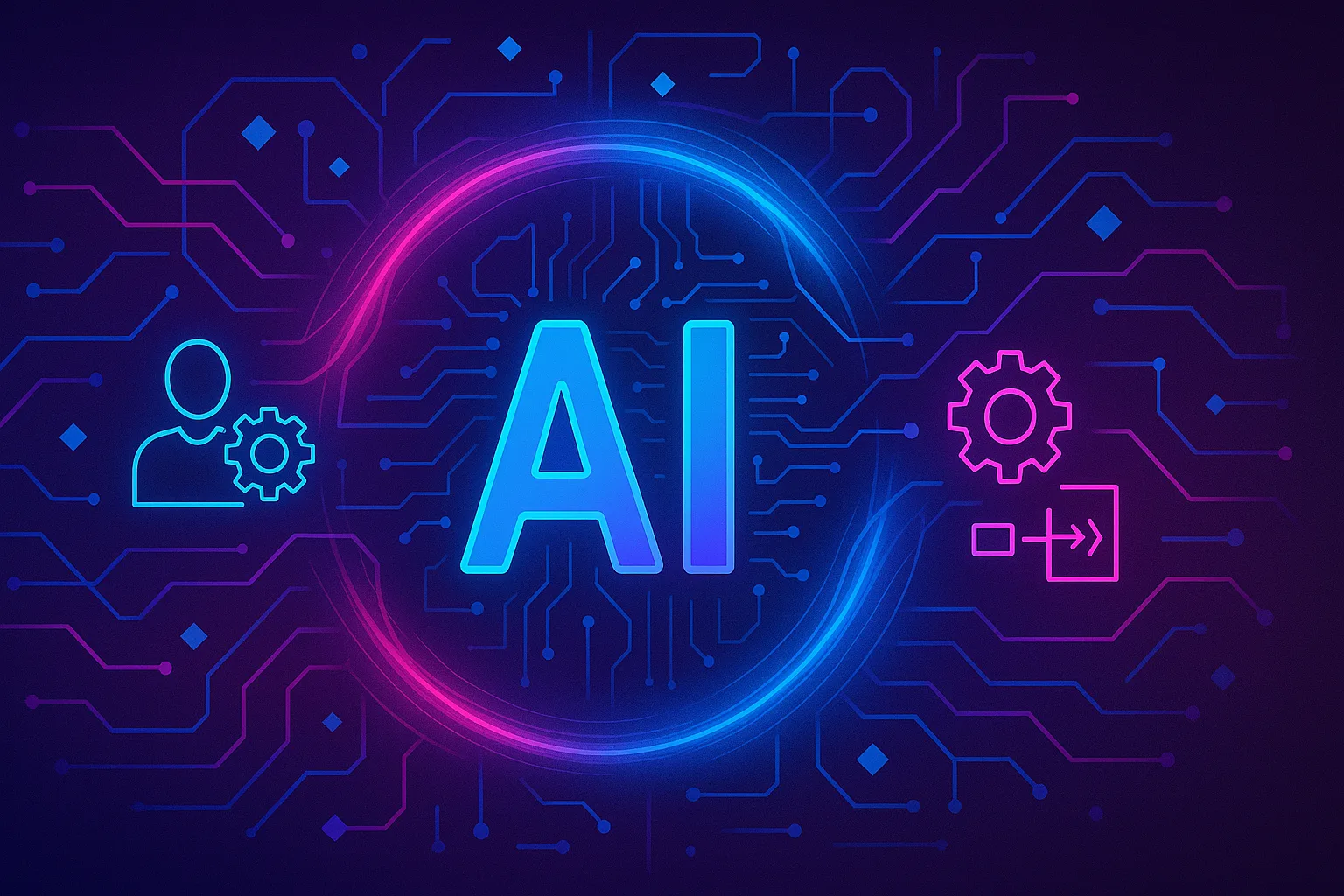Imagine a world where computer vision integration allows robots not only ‘do’ but ‘see’ and ‘understand’. Welcome to the Fourth Industrial Revolution (Industry 4.0)! Here, the fusion of artificial intelligence and industrial robotics is sparking innovations that are completely transforming the game. At the heart of this transformation is computer vision. By equipping industrial robots with the capacity to ‘see’ and to interpret their environment, this remarkable technology holds significant potential for enhancing the efficiency, precision, and versatility of industrial operations.
Despite its promise, the integration of computer vision into industrial robotics software is no walk in the park. It involves careful selection of algorithms, crafting robust software and hardware architectures, proficient data management, and fulfilling the demanding real-time constraints of industrial applications. Drawing from real-world experiences in this field, this industry-focused guide provides actionable insights and examples, all designed to help you smoothly navigate the intricacies of integration.
Choosing Appropriate Algorithms
The realm of computer vision is teeming with a wide range of algorithms. As you integrate computer vision into your projects, it’s important to make informed choices that align with your specific needs. Each algorithm has its own unique strengths and applications, offering a variety of possibilities to enhance your vision-based endeavors. Take the time to carefully consider and select the algorithms that best suit your requirements.
Embracing Algorithm Diversity: In the realm of computer vision, you’ll find a wide variety of algorithms, each with its own specific function and purpose. These algorithms act as powerful tools, enabling us to explore and analyze visual data in remarkable ways. From traditional methods to the cutting-edge advancements of deep learning, each algorithm brings its own set of capabilities and advantages. By exploring and understanding the nuances of different algorithms, you can make informed decisions about the most suitable ones for your specific applications.
Thoughtful Decision-Making: The integration of computer vision requires a careful and strategic approach. Rather than rushing into arbitrary choices, take the time to conduct a thorough analysis of your requirements and objectives. By clearly defining your use case, desired functionalities, and performance criteria, you can make thoughtful decisions that align closely with your specific needs.
Considering Strengths and Applications: Like a well-equipped toolbox, the field of computer vision offers a diverse selection of algorithms, each serving as a specialized tool with its own unique capabilities and strengths. Just as different tools excel in specific tasks, these computer vision algorithms work best in various areas and applications. From object detection to image segmentation or tracking, each algorithm brings its own expertise to the table. By evaluating the strengths and limitations of these algorithms, you can select the precise tools that allow you to achieve your computer vision goals.
Evaluating Performance: Evaluating algorithm performance is a crucial step in the integration process. Factors such as accuracy, speed, robustness, and scalability should be carefully assessed to ensure optimal results. Conducting benchmark tests and considering real-world scenarios can help you gauge how well each algorithm meets your requirements.
A good example of this is Amazon (www.amazon.com), a world-leading e-commerce company, which successfully automated its warehouse operations using object detection and recognition algorithms. Their choice of algorithms, including Convolutional Neural Networks (CNNs), was instrumental in the seamless integration of computer vision into their industrial robots, underlining the importance of task-oriented algorithm selection.
Constructing a Robust Software and Hardware Architecture
A well-designed software and hardware architecture is crucial for seamlessly integrating computer vision techniques into industrial robotic software. It optimizes performance, scalability, and flexibility, allowing for efficient handling of the computational demands of computer vision algorithms. By prioritizing a well-designed architecture, industrial robotics systems can effectively harness the power of computer vision for enhanced performance and successful deployment.
Software Modularity: A modular software design is key to ensuring flexibility and scalability. Think of it as a well-organized set of building blocks that interconnect seamlessly. With this design approach, individual components can be easily updated or replaced without causing disruption to the entire system. As your needs evolve and new computer vision capabilities emerge, you can smoothly integrate them into your existing framework. This flexibility enables your system to stay up to date with the latest advancements, ensuring that it remains robust and adaptable.
Leveraging GPU Acceleration: In the dynamic world of computer vision, meeting the computational demands of algorithms is no small feat. It’s like participating in a high-speed race where every second counts. To achieve real-time operations and unleash the full potential of your computer vision system, you need the support of robust processing power. This is where Graphics Processing Units (GPUs) step in. GPUs as the turbochargers of your system, possessing the ability to perform multiple operations simultaneously. To harness the power of GPUs, your software should be designed to take advantage of GPU acceleration, maximizing performance and efficiency. For more information on GPU optimization check out our GPU webinar here.
NVIDIA (www.nvidia.com), a global leader in GPU-accelerated computing, offers a compelling example of effectively harmonizing software and hardware for computer vision applications. Their Jetson platform, specifically designed for edge AI applications, leverages GPU acceleration to meet the intensive computational requirements of computer vision algorithms. This integration significantly enhances system performance, making Jetson a preferred choice for a wide range of robotics applications.
Data Management Strategy for Computer Vision Integration
Data serves as the lifeblood of AI-based technologies, and its effective management holds particular significance in the realm of computer vision within robotics software. Data serves as the foundation for training algorithms, enabling them to perceive and understand visual information. With a well-designed data management strategy, AI-based technologies can harness the power of high-quality data to train and optimize algorithms, leading to enhanced accuracy and performance.
Data Collection and Annotation: Having only a very narrow dataset is like looking at the world through a tiny keyhole. It restricts our view to a limited perspective, preventing us from gaining a comprehensive understanding of the broader reality. To achieve a more complete and nuanced understanding, we need a wider dataset that encompasses diverse scenarios a robot might encounter, capturing the richness and variability of the real world. Equally important is the precise labeling of data, which forms the foundation for training computer vision models.
Data Storage and Accessibility: Like the backbone of a well-organized library, robust storage solutions and efficient retrieval methods are vital when handling large volumes of image or video data. They enable easy access and availability of large volumes of image or video data, serving as the navigational system that provides insights and understanding for computer vision systems. These solutions empower systems to analyze and comprehend the visual world, extracting meaningful knowledge from the data at hand.
Data Integration: The integration of computer vision into robotic systems involves fusing data from vision sensors with other sensor modalities, enhancing perception and decision-making capabilities. Effective data management is crucial, enabling the system to adapt, learn, and improve over time based on real-world experiences. By seamlessly combining visual information with inputs from depth sensors, lidar, IMUs, and more, the system gains a comprehensive understanding of its surroundings, much like humans perceive the world through multiple senses. This integration, coupled with efficient data management, drives the development of intelligent robotic systems that can make informed decisions and take precise actions.
Google (https://about.google/), a prominent leader in handling big data, offers valuable insights into effective data management practices. Their automated data centers employ computer vision for predictive maintenance, a task that involves managing extensive amounts of data. Google’s proficient use of storage and retrieval systems to handle vast image and video data has played a significant role in the successful deployment of their computer vision-enabled systems.
Meeting Real-Time Constraints
Real-time operation in industrial applications of computer vision is crucial for timely decision-making, adaptability, process optimization, seamless automation integration, and ensuring safety. It enables quick responses, informed actions, and continuous improvement in dynamic industrial environments. By leveraging algorithm optimization and parallel processing, computer vision systems can achieve the speed and responsiveness required to identify inefficiencies, detect hazards, and optimize processes, leading to increased productivity, efficiency, and a secure working environment.
Algorithm Optimization: Achieving real-time operation for computer vision algorithms is critical for robotic applications. It’s like equipping your robot with lightning-fast reflexes, enabling it to navigate and interact with the world seamlessly. To accomplish this feat, fine-tuning your algorithms becomes paramount. This may involve optimizing models by simplifying them, reducing image resolution, or fully leveraging hardware acceleration capabilities. By carefully optimizing your algorithms, you can achieve the necessary speed and responsiveness for real-time operation.
Parallel Processing Exploitation: Taking advantage of the parallel processing capabilities offered by modern hardware is key to accelerating the execution of your computer vision algorithms. By applying the power of parallel processing, you can break down tasks into smaller, manageable chunks and process them simultaneously, leading to substantial speed improvements and the ability to meet real-time requirements. Parallel processing not only enhances the speed of execution but also enables you to tackle complex computer vision tasks that would otherwise be impractical or time-consuming. For instance, you can perform real-time object detection, tracking, or image recognition, where immediate responses are crucial.
Siemens (www.siemens.com), a prominent player in the field of Industry 4.0, provides a noteworthy example of effectively meeting real-time operational demands. Their advanced manufacturing solutions incorporate computer vision for crucial tasks like quality inspection and process monitoring. These applications demand the processing of substantial amounts of data at high speed to enable real-time decision-making. Siemens’ successful integration of computer vision into their industrial systems can be attributed to their effective approach to algorithm optimization and leveraging parallel processing capabilities.
Computer Vision Integration Testing
Thorough testing is a crucial step in the integration process of computer vision within real-world industrial environments. It ensures the seamless and effective functioning of the computer vision system by validating its performance, reliability, and compatibility. Comprehensive testing involves subjecting the algorithms to diverse scenarios, assessing factors such as accuracy, responsiveness, and scalability. By conducting thorough testing, potential issues can be identified and addressed, allowing you to fine-tune your system’s performance.
Simulation Testing: Simulation testing serves as the vital bridge between imagination and reality, allowing for safer, more efficient, and transformative solutions. When integrating computer vision algorithms, simulation testing becomes an invaluable component of the testing process. It offers a secure and controlled platform where you can replicate real-world industrial conditions, enabling comprehensive assessment and optimization of your computer vision system. By taking a proactive approach through simulation testing, you ensure that your algorithms are safe, robust, and reliable. This leads to a smoother and more successful deployment of your computer vision system in practical industrial settings, where it can make a significant impact.
Real-World Testing: Imagine relying on a pilot who had only ever flown in a flight simulator. It’s clear that real-world experience is essential for building trust and validating performance. The same principle applies to computer vision systems. While simulations provide a valuable starting point, they cannot fully replace the invaluable insights gained from testing in authentic operational environments. Real-world testing allows you to assess how your system performs under actual conditions, including varying lighting conditions, occlusions, and other challenges encountered in practical industrial operations. This hands-on testing approach provides invaluable feedback, enabling you to fine-tune and optimize your computer vision system for optimal performance and reliability in real-world applications.
Boston Dynamics (www.bostondynamics.com), known for their cutting-edge robots, has consistently emphasized the importance of real-world testing in their development process. Their robot, Spot, uses computer vision for navigation and task execution. While the company uses extensive simulations to validate Spot’s abilities, they also ensure that the robot is tested in diverse, real-world environments. This approach allows Boston Dynamics to identify and address the limitations that simulations might not reveal.
Conclusion
The integration of computer vision into industrial robotic software paves the way towards an era where machines do more than just execute tasks – they perceive, comprehend, and adapt to their environment. Through these real-world examples from companies like Amazon, NVIDIA, Google, Siemens, and Boston Dynamics, and by adhering the best practices that I’ve outlined, companies can successfully navigate the complexities of this integration process and unlock the profound potential of this groundbreaking technology.





